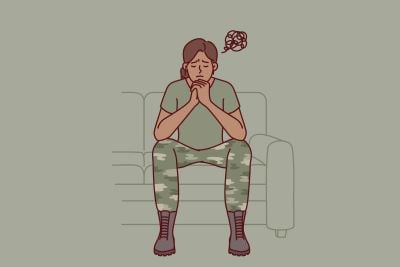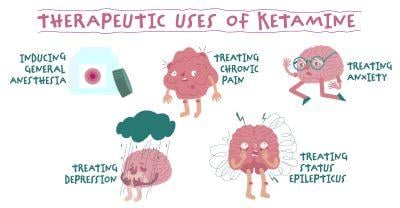Firearm Suicide Risk in Service Members and Veterans
Firearm Suicide Risk in Service Members and Veterans

Firearm ownership is undoubtedly a risk factor for suicide. While it is not the only risk factor, it is a significant one and certainly the most lethal. Firearms are a common method of suicide in veterans with high rates of gun ownership. According to statistics, suicides make up 3 in every 5 gun deaths and each day about 60 Americans die by firearm suicide. Of those 60 people, 17 to 22 are veterans. And in the U.S. military, firearms account for the majority of suicide deaths.
Addressing suicide risk in veterans and military service members is important and as a clinical research psychologist who has studied suicidal behavior and firearm injury in service members, I believe effective prevention strategies can go a long way in lowering these numbers and making sure veterans and service members get the help they need.
Facts, Statistics and Factors
The U.S. Department of Defense (DoD) reported that in 2022, firearms were the primary method of suicide death for service and family members and most service members who died by suicide were young, enlisted men. Veterans have a 50 percent higher risk of suicide than their non-serving peers and while “veterans make up about 7 percent of the U.S. adult population they account for 18 percent of the nation’s gun suicide deaths”.
But there are ways in which risk can be minimized and service members and veterans who own or have access to guns can ensure safer and more protective measures for themselves and their family members. Of course this holds true for anyone who owns a firearm or has access to one.
The following tips and considerations are meant for everyone but especially for veterans, deployed and post-deployment service members, and their family members and loved ones.
- Firearms access and storage
If a service member or veteran is a gun owner and is having a mental health crisis with suicidal thoughts or behaviors, an easily accessible firearm can be deadly. Delaying the time and distance of firearm access can reduce suicide risk and save lives. One way to do that is to ensure firearms are safely and appropriately stored, locked, and unloaded in a storage facility or place that requires some time and effort to get to and open.
- Service-related stressors
Military personnel are under stress that we as civilians cannot imagine. Service-related stressors include combat or line-of-duty injuries, post-traumatic stress disorder (PTSD) and other psychological disorders, loss of fellow service members, adjusting to life and work after deployment or major transitions such as going from military to civilian life, and any disciplinary action that might result in a loss of honor or advancement in the military.
- Interpersonal factors
Personal circumstances and challenges can be difficult for all of us but for service members and veterans some of the interpersonal factors that affect their mental health and risk of suicide include isolation with limited social and family support, a history of abuse, relationship issues, substance or alcohol misuse, financial and / or legal problems, and living in areas with limited access to healthcare services, especially mental healthcare.
- Geographical location / considerations
Where a service member or veteran resides and that state’s gun control legislations do make a difference. The fact is that the risk of firearm suicide is lower in states with stricter gun control. Veterans tend to live in states with easier firearm access, and are more likely to own firearms than civilians, increasing overall suicide rates in those states. Factoring in age, gender, mental health disorders, Veteran Affairs accessibility, and distances to healthcare facilities, it is not surprising that rural areas experience higher rates of veteran firearm suicides than urban ones.
The Role of Mental Health in Gun Ownership
While mental health disorders are not significantly associated with gun ownership, research shows that conditions such as panic disorder, intermittent explosive disorder, and post-traumatic stress disorder (PTSD) influence gun-carrying behavior among personnel recently separated from the U.S. Army. Symptoms of PTSD, including exaggerated threat perception and severe hyperarousal, have also been linked to unsafe firearm storage and elevated risks of firearm suicide among veterans.
Exposure to high-intensity combat, which can affect mental health, increases the likelihood of firearm ownership and suicide capability. Compared to non-deployed service members, rates of suicide are lower among currently deployed personnel, but significantly higher in the period right after first deployment. Suicide rates further increase within the first year of separation from the military. And in our research, we found that military punishment and perceived failure or humiliation in the month prior to death increased the odds of suicide in active-duty soldiers.
Studies show that although service members with suicidal ideation and depressive symptoms are not more likely to own firearms, they are more likely to practice unsafe storage, including carrying a gun in public and storing loaded / unlocked firearms at home. One study concluded that 1 in 3 veteran firearm owners store at least one of their firearms loaded and / or unlocked. This is worrying given unsafe storage is linked to a three-fold increase in firearm suicide risk.
Conclusions
There are many things that still need to be researched and identified in firearm suicide risk. Part of my work aims to understand why we still miss so many suicide cases in service members and veterans. Gun suicide is preventable but we need to ensure better risk screening methods, access to support, education and resources, and focus on suicide treatment development that is targeted specifically at service members and veterans.
Disclaimer: The opinions and assertions expressed herein are those of the author(s) and do not reflect the official policy or position of the Uniformed Services University of the Health Sciences, the Department of Defense or the Henry M. Jackson Foundation for the Advancement of Military Medicine, Inc. Mention of trade names, commercial products, or organizations does not imply endorsement by the U.S. Government.




















